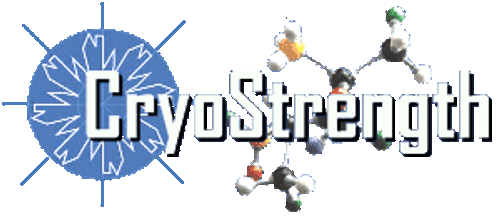
 BACKGROUND OF CRYOGENICS
BACKGROUND OF CRYOGENICS
Cryogenic Freezing
Cryogenic Processing is a one time, permanent and irreversible treatment that affects the entire object, not just the surface.
Cryogenics is a form of heat treat. The material being treated is exposed to extremely cold temperatures in a controlled atmosphere. As the material drops in temperature the molecular movement starts to slow down and the individual molecules move closer together. When the temperature is maintained at below -300º F the molecules virtually stop moving and become very compact. Upon thawing at a controlled rate they begin to spread out evenly, creating a consistent molecular pattern. When the material becomes room temperature again all the molecules are now distributed equally and aligned in an extremely consistent grain pattern. The new consistent grain structure distributes the flow of energy evenly throughout the entire object, eliminating stress points. This elimination of stress points creates a consistent and evenly distributed microstructure. The treated material has a new grain pattern with no weak points and is stronger and more durable than ever before.
In scientific terms the process is a transformation of the retained austenite structure into a martensite atom structure. The soft retained austenite atom structure is changed by using the correct cycle of temperature changes into its harder form, which is a martensite atom structure. This is the actual strengthening agent.
A good comparison can be made between the Cryogenic Process and the quenching of melted metal ore. Quenching is the rapid cooling of metal using water or oil. The Cryogenic Process can be thought of in the same fashion, except that Cryogenics takes the quenching process to -300 degrees F and is a dry process.
![]()











